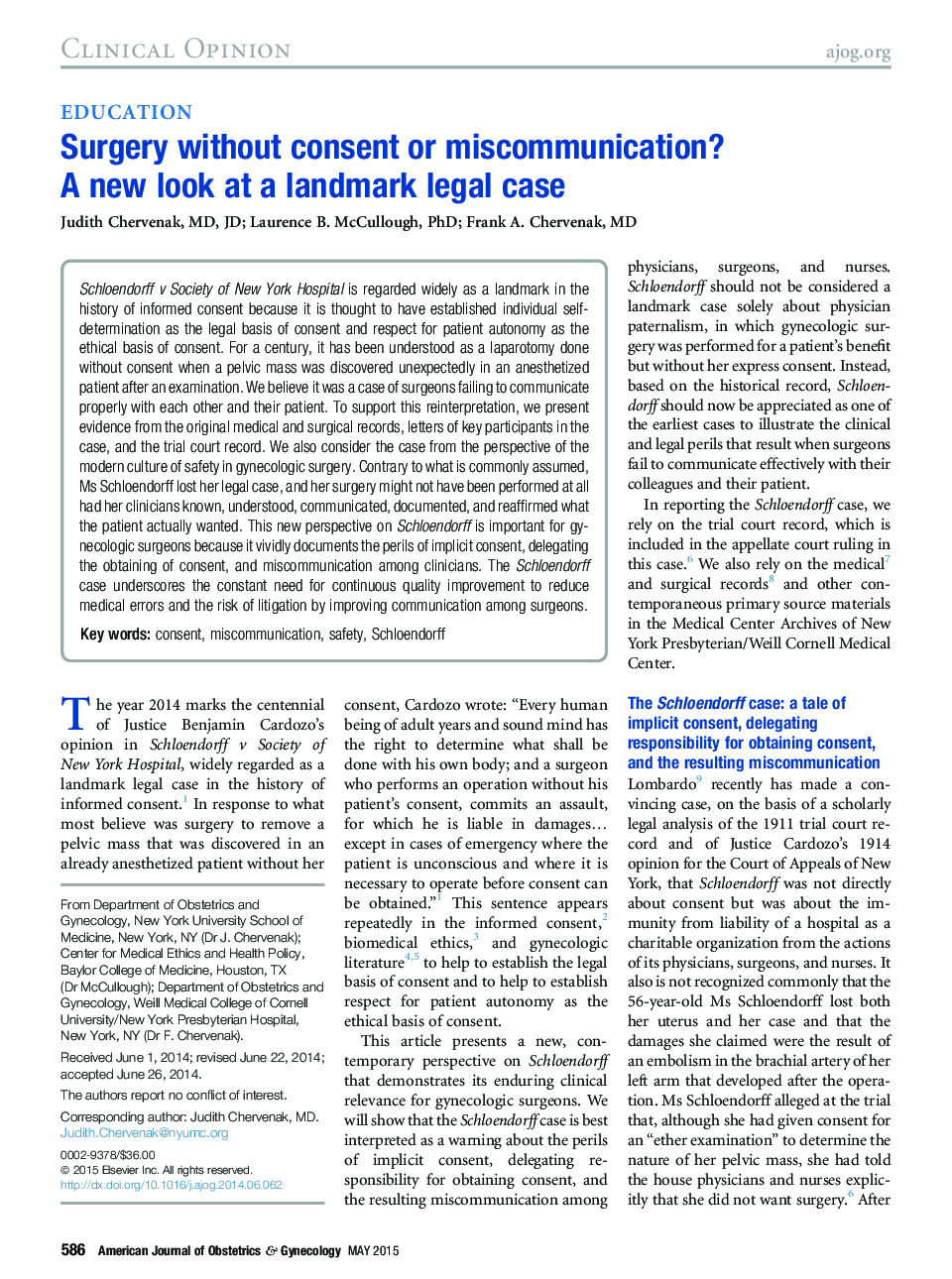| Article ID | Journal | Published Year | Pages | File Type |
|---|---|---|---|---|
| 3432868 | American Journal of Obstetrics and Gynecology | 2015 | 5 Pages |
Schloendorff v Society of New York Hospital is regarded widely as a landmark in the history of informed consent because it is thought to have established individual self-determination as the legal basis of consent and respect for patient autonomy as the ethical basis of consent. For a century, it has been understood as a laparotomy done without consent when a pelvic mass was discovered unexpectedly in an anesthetized patient after an examination. We believe it was a case of surgeons failing to communicate properly with each other and their patient. To support this reinterpretation, we present evidence from the original medical and surgical records, letters of key participants in the case, and the trial court record. We also consider the case from the perspective of the modern culture of safety in gynecologic surgery. Contrary to what is commonly assumed, Ms Schloendorff lost her legal case, and her surgery might not have been performed at all had her clinicians known, understood, communicated, documented, and reaffirmed what the patient actually wanted. This new perspective on Schloendorff is important for gynecologic surgeons because it vividly documents the perils of implicit consent, delegating the obtaining of consent, and miscommunication among clinicians. The Schloendorff case underscores the constant need for continuous quality improvement to reduce medical errors and the risk of litigation by improving communication among surgeons.
